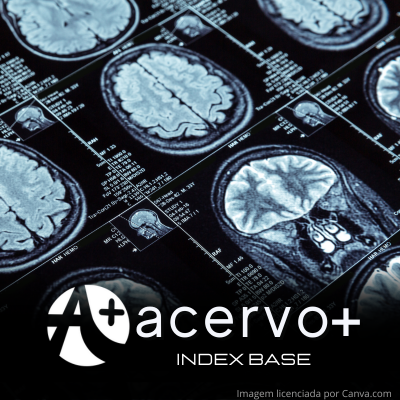Classificação de estágios da doença de Alzheimer em imagens de ressonância magnética por redes neurais convolucionais
##plugins.themes.bootstrap3.article.main##
Resumo
Objetivo: Propor um algoritmo inteligente para diagnosticar a Doença de Alzheimer usando exames de ressonância magnética, além de comparar o desempenho de cinco modelos de redes neurais convolucionais (ResNet50, VGG19, DenseNet201, InceptionV3 e EfficientNetB7) na classificação automática de estágios da doença. Métodos: Nesta pesquisa, foi feio um estudo experimental realizado com 416 exames de ressonância magnética funcional oriundos do dataset OASIS-1, envolvendo pacientes entre 18 e 96 anos. Foram utilizadas imagens segmentadas entre as fatias 100 e 160, com pré-processamento padronizado e treinamento dos modelos utilizando o otimizador Adam (taxa de aprendizado 10⁻³, batch size 32), com parada antecipada e redução adaptativa da taxa de aprendizado. Resultados: Na classificação multiclasses (Sem Demência, Demência ?Muito Leve, Demência Leve e Demência Moderada), ResNet50 obteve acurácia de 83%, DenseNet201 de 82% e VGG19 de 80%, destacando-se frente ao InceptionV3 (78%) e EfficientNetB7 (72%). A abordagem hierárquica binária (com demência e sem demência) demonstrou ganhos em precisão, com destaque para a ResNet50, que atingiu acurácia de 96%. Conclusão: As redes convolucionais apresentam desempenho promissor para o diagnóstico assistido da Doença de Alzheimer, especialmente com a adoção de estratégias hierárquicas que reduzem erros na distinção entre os estágios da doença.
##plugins.themes.bootstrap3.article.details##
Copyright © | Todos os direitos reservados.
A revista detém os direitos autorais exclusivos de publicação deste artigo nos termos da lei 9610/98.
Reprodução parcial
É livre o uso de partes do texto, figuras e questionário do artigo, sendo obrigatória a citação dos autores e revista.
Reprodução total
É expressamente proibida, devendo ser autorizada pela revista.
Referências
2. ARCHANA B, KALIRAJAN K. Alzheimer’s disease classification using convolutional neural networks. In: International Conference on Innovative Data Communication Technologies and Application (ICIDCA), 2023. IEEE, 2023; 1044-1048.
3. CASTELLANI RJ, et al. Alzheimer disease: Alzheimer’s disease is the most common form of dementia. Disease-a-Month, 2010; 56(9): 484-546.
4. CHANDRA A, et al. Magnetic resonance imaging in Alzheimer’s disease and mild cognitive impairment. Journal of Neurology, 2019; 266(6): 1293-1302.
5. EBRAHIMI A, et al. Multi-class classification of Alzheimer’s disease using deep learning: a review. Current Alzheimer Research, 2021; 18(1): 50-68.
6. ESTEVA A, et al. Dermatologist-level classification of skin cancer with deep neural networks. Nature, 2017; 542(7639): 115-118.
7. GOODFELLOW I, et al. Deep learning. Cambridge: MIT Press, 2016; 800p.
8. GUZIOR N, et al. Alzheimer’s disease: understanding the neuropsychological profile. Neuropsychology Review, 2015; 25(3): 1-15.
9. HE K, et al. Deep residual learning for image recognition. In: IEEE Conference on Computer Vision and Pattern Recognition (CVPR), 2016, Las Vegas. Proceedings. Los Alamitos: IEEE, 2016; 770-778.
10. HUANG G, et al. Densely connected convolutional networks. In: IEEE Conference on Computer Vision and Pattern Recognition (CVPR), 2017, Honolulu. Proceedings. Los Alamitos: IEEE, 2017; 4700-4708.
11. HUSSAIN MZ, et al. A tuned convolutional neural network model for accurate Alzheimer’s disease classification. Scientific Reports, 2025; 15: 11616.
12. JACK CR Jr, et al. Medial temporal atrophy on MRI in normal aging and very mild Alzheimer’s disease. Neurology, 1997; 49(3): 786-794.
13. LA MONTAGNE P, et al. Medial temporal lobe subregional atrophy in aging and Alzheimer’s disease: a longitudinal study. Frontiers in Aging Neuroscience, 2021; 13: 750154.
14. LIU M, et al. A multi-model deep convolutional neural network for automatic hippocampus segmentation and classification in Alzheimer’s disease. NeuroImage: Clinical, 2020; 27: 102303.
15. LITJENS G, et al. A survey on deep learning in medical image analysis. Medical Image Analysis, 2017; 42: 60-88.
16. MARCUS DS, et al. Open Access Series of Imaging Studies (OASIS): cross-sectional MRI data in young, middle aged, nondemented, and demented older adults. Journal of Cognitive Neuroscience, 2007; 19(9): 1498-1507.
17. MISHRA RP, et al. Alzheimer’s disease classification using convolutional neural network and random hyperparameter tuning. In: International Conference on Odisha on Electrical Power Engineering, Communication and Computing Technology (ODICON), 3., 2024, Bhubaneswar. Proceedings. Piscataway: IEEE, 2024; 1-6.
18. MORRIS JC. The Clinical Dementia Rating (CDR): current version and scoring rules. Neurology, 1993; 43(11): 2412-2414.
19. PASCANU R, et al. Understanding the difficulty of training deep feedforward neural networks. In: International Conference on Machine Learning (ICML), 30., 2013, Atlanta. Proceedings. Atlanta: JMLR, 2013; 1310-1318.
20. PENG L, et al. The role of demographic features in predicting Alzheimer’s disease: a machine learning approach. Frontiers in Neuroscience, 2020; 14: 749.
21. RUBIN EH, et al. Mapping Mini-Mental State Examination scores onto Clinical Dementia Rating categories in Alzheimer’s disease. American Journal of Geriatric Psychiatry, 1998; 6(2): 149-155.
22. SIMONYAN K, ZISSERMAN A. Very deep convolutional networks for large-scale image recognition. arXiv 2014; 1409: 1556.
23. SZEGEDY C, et al. Rethinking the inception architecture for computer vision. In: IEEE Conference on Computer Vision and Pattern Recognition (CVPR), 2016, Las Vegas. Proceedings. Los Alamitos: IEEE, 2016; 2818-2826.
24. TAN M, LE QV. EfficientNet: rethinking model scaling for convolutional neural networks. In: International Conference on Machine Learning (ICML), 36., 2019, Long Beach. Proceedings. Long Beach: JMLR, 2019; 6105-6114.
25. VAN DER MOLEN S. Scikit-learn for machine learning. Journal of Machine Learning Research, 2020; 21(1): 1-5.
26. ZHANG Z, et al. Evaluation metrics for machine learning in Alzheimer’s disease: a review. Journal of Alzheimer’s Disease, 2018; 62(3): 987-1002.
27. ZHU W, et al. Deep learning for medical image analysis: a comprehensive review. Medical Image Analysis, 2019; 58: 101552.

